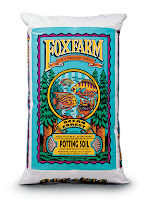We're making the most of this cold, rainy weather at Mountain High North Pole tubing park
 |
| From Tubing video |
 |
| From Tubing video |
 I don't take enough time to appreciate just how much of a gift Rigel and Iz are--it's a bit too easy to get caught up in life's routine. I'd like to get better at savoring each moment with these two treasures, and spend less time attempting to balance all our daily details. Beauty is in the details, right? We just have to allow ourselves to be distracted.
I don't take enough time to appreciate just how much of a gift Rigel and Iz are--it's a bit too easy to get caught up in life's routine. I'd like to get better at savoring each moment with these two treasures, and spend less time attempting to balance all our daily details. Beauty is in the details, right? We just have to allow ourselves to be distracted.



"[Danny Gregory] gently instructs us in the art of allowing ourselves to fail, giving up the expectation of perfection and opening our eyes to the beauty around us. The result is...a wild celebration of amateurism, full of humor, passion, and encouragement, sure to inspire every doodler, frustrated writer, wannabe musician, and midlife-crisising executive--in other words, the artist inside every one of us."--Hyperion Books
Excerpt from Everyday Matters:
"...Then one evening, I decided to teach myself to draw...I committed to drawing the things around me, sticking to studies of real things... my first efforts were horrible... But one quiet evening, ... Something about that drawing was different from anything I'd ever done before. I took my time, and then suddenly I zoned out. My mind went blank, my breathing slowed, and when I finally stopped to look at my page, I was amazed that I had managed to create anything so beautiful. At first, it seemed like a fluke... but then I drew the contents of our medicine cabinet (slowly, slowly), and again I saw something new...
What was different was not the drawing but the seeing. I caressed what I drew with my eyes, lingering over every curve and bump, gliding around contours and into shadows. No matter what I looked at in this way, I saw beauty and felt love. It was very weird but it happened again and again. When I slowed way down and let my mind go, I had the same incredibly sensual experience. It didn't matter what I drew. And then I discovered it didn't matter what the drawing was like. In fact, I could simply toss it away, like the skin of a banana. What mattered was the slow, careful gaze." --Danny Gregory, Everyday Matters
P.S. Click here to check out his blog
photo credit: Amazon.com
To this:
"Autumn is a second spring where every leaf is a flower. "
--Albert Camus
It's about time to clear out the spring vegetables and begin preparing the soil for the cool season crops of autumn. My first experience getting my hands in the dirt proved to be fulfilling to the soul and mind. Here are some tips I learned from trial, error and research:
Organic Vegetable Gardening 101
(according to the Fox Den's experiences this last spring)
Good dirt is essential. Loamy, nutrient-rich soil is the key ingredient to a successful garden (along with the basic essentials of fertilizer, compost, and mulch, there are some other optional soil amendments--such as lime, potash, gypsum, etc.--available as well to prepare your vegetable beds). You can purchase your soil, or you can prepare it yourself...just depends on how much money you want to spend.
Proper seed spacing is almost as important as proper soil--especially to root vegetables such as carrots, radishes, and beets. Click here for a glimpse of improperly spaced root vegetables grown in silty-clay soil (poor-draining soil).
Companion planting is both complicated and simple--it remains an experiment of balancing well-practiced methods of companion planting with your own.
Planting companion flowers within your vegetable garden is as aesthetically pleasing as it is beneficial to the success of your garden. Interweaving flowers such as marigolds, alyssum, yarrow, hyssop, borage, sunflowers and calendula into your vegetable beds is a multi-functional arrangement (which benefits the birds, bees, flowers, trees and you). Alyssum and chamomile are frequent re-seeders; they help break up the soil and add to the organic content. Chamomile activates the composting process, and encourages increased essential oil production for strong herbs such as lavender and rosemary. Hyssop, marigolds, and yarrow attract hoverflies, which eat aphids. Marigolds can be nematocytal if grown as a crop cover and tilled in before the plants get too large; they are also believed to deter pests.
Cucurbits (melons & squash) and legumes (beans, peas & sweet pea flowers) are susceptible to mold. Prevention includes removing all portions of the infected plant at first sign of mold growth, disposing of all moldy leaves and stems (do not recycle to mulch or compost). Spray tops and undersides of leaves, stems and soil with soapy solution (consult local nursery for best advice). Try not to water plants directly (water soil only). Click here to see a variety of environmentally-friendly pest control products.
Brassicas / cruciferous vegetables (i.e., cabbage, broccoli, brussel sprouts), leafy greens (ie., lettuce & spinach), and herbaceous perennials (i.e., strawberries & artichokes) are vulnerable to pests such as cutworms, armyworms, and cabbage loopers. These pests can be found on the undersides of leaves and hiding just below the surface soil at the plant base. Use a safe organic pesticide (consult local nursery), &/or apply microscopic nematodes to the soil &/or purchase biocontrol insects such as mini wasp pupae.
Poorly-drained soil &/or over-watered soil makes garden beds vulnerable to fungus gnats. These gnats thrive in moist environments, and can spread rapidly. The larval stage of fungal gnats can damage root systems and spread plant disease. Excess plant debris &/or newly added compost/mulch can attract fungus gnats, so keep beds free of excess debris (and use "older" well-broken down compost, supposedly). Combat with organic insecticides (consult local nursery) &/or biocontrol agents (such as rove beetles). Do not mulch beds with poorly-draining soil (i.e., silty clay) which is watered frequently.
Tomatoes are susceptible to yellow leaf curl virus. This disease can devastate your tomatoes! Prevent yellow leaf curl virus by planting tomatoes from seed, not using soil or beds which grew previously infected plants, controlling whitefly infestations with organic insecticide or biocontrol agents (whiteflies can contribute to spreading of the plant disease), never watering the leaves and stems of the tomato plants directly (this can contribute to spreading from plant to plant), and removing any infected portions of the plant and quarantining it from the rest of the garden. Also, spray a water & milk solution on the top and undersides of the tomato leaves, as well as directly into the soil regularly. Spray beneficial nematodes into the soil.
Ladybugs, hoverflies, praying mantis, lacewings, nematodes and bumblebees are just a small portion of the vast array of beneficial garden insects available for purchase online (and at some local nurseries / supply stores). Use of beneficial insects to combat garden pests is a green way to help keep your plants pest-free and aide crop pollination... Click here to find a very thorough resource on these biocontrol agents.
Tomatoes are host plants to hornworms (tobacco &/or tomato hornworms), which eat the leaves / stems of the tomato plants. Hornworms are the caterpillars which metamorphosize into sphinx moths (hawk moths). Sphinx moths scout out host plants on which to lay their eggs... learn how to identify sphinx moths, and remove them from your garden (transplant elsewhere? :) Sphinx moths are attracted to porch lights at night, and are often mistaken for hummingbirds during the day. Remove the sphinx moths from your garden, and you may not have to worry about picking hornworms off your tomato plants later... it's worked for me so far. (Confession: these large hummingbird-like moths are toys to cats, who will play with them until the moths eventually meet their doom.)
Composting can be addicting! How can a gardener not find appeal in creating one's own nutrient-rich plant medium from recycled kitchen scraps? Added bonus: vermicomposting (i.e., worm tea & worm castings).
Fertilizers are great for maximizing flavor, yeild and size of your vegetables. Click here for a great organic fertilizer. Work out a feeding schedule, and try and stick to it regularly. These liquid fertilizers applied with a folliar pump spray are my favorite: FoxFarm Big Bloom, Tiger Bloom and Grow Big.
Nothing compares to flowers freshly cut from your own garden supply... especially if they are your favorite variety. You can never have too many tomatoes, squash, beans and other good things... gardening is a great way to get to know your neighbors (...sharing is good)!
Try letting some of your flowers, herbs, and legumes go to seed, then clip / collect them when they are dried on the stems--this works especially well for sweet peas, cilantro, dill and beans. If seed pods are not entirely dry, clip and set out in a dry location (in the garage, near the window...) before hulling and storing (plastic baggies and recycled glass jars with lids work well for storage, as long as they are air-tight and dry). Seeds are supposed to last for at least a year, but productivity decreases with time.
Research, seek out, and explore gardening online as well as in the library... there are a lot of great resources out there (Online: You Grow Girl, Urban Homestead, The One Block Diet...Books: Roots, Shoots, Buckets & Boots, This Common Ground, The Backyard Homestead)
 I remember going to my Japanese grandmother's house when I was little... rarely was she without gardenias in her home. She would cut the blossoms from her front yard, and float them in shallow black bowls of water. The following review is not exactly reminiscent of a trip to Grandma's house, but it left my nose detecting subtle hints of the delicious flower while reading this fan's take on a fragrance called Fracas:
I remember going to my Japanese grandmother's house when I was little... rarely was she without gardenias in her home. She would cut the blossoms from her front yard, and float them in shallow black bowls of water. The following review is not exactly reminiscent of a trip to Grandma's house, but it left my nose detecting subtle hints of the delicious flower while reading this fan's take on a fragrance called Fracas:
Wow. Intense description... fragrances are fun to fantasize about.
Some more fragrances on my list to experience: Marc Jacobs, Michael Kors, Carnal Flower, Kai, Creed Tubereuse Indiana, and Voluspa Fleurs de Fete... all are gardenia scented fragrances
The List: celebrities and their fragrances... (I don't really care who's wearing what, but some people find it interesting)
Click here if you are cheap (like me) and would rather learn how to make your own gardenia fragrance from the garden
 Old-timer San Diegans may recall when the San Diego Union Tribune was two different newspapers: the San Diego Union and the San Diego Tribune. Before the two papers merged and became "the U-T," and before it's office building was located in Mission Valley, our San Diego newspaper building was located dowtown at 919 2nd Street. Thus, the "919 Gang" was formed, an email group consisting of most of the original reporters from the downtown building . My grandfather, Charlie Ross, was a founding member of the 919 Gang. He worked for the SD Union from 1956-1992. My Uncle Jerry also worked for the U-T, and here's an unauthorized excerpt from his contribution to the latest 919 Gang email message:
Old-timer San Diegans may recall when the San Diego Union Tribune was two different newspapers: the San Diego Union and the San Diego Tribune. Before the two papers merged and became "the U-T," and before it's office building was located in Mission Valley, our San Diego newspaper building was located dowtown at 919 2nd Street. Thus, the "919 Gang" was formed, an email group consisting of most of the original reporters from the downtown building . My grandfather, Charlie Ross, was a founding member of the 919 Gang. He worked for the SD Union from 1956-1992. My Uncle Jerry also worked for the U-T, and here's an unauthorized excerpt from his contribution to the latest 919 Gang email message: Click here to read more on Mom's Night Out.
Click here to read more on Mom's Night Out. photo credit: positively feminine
photo credit: positively feminine



 P.S. I love this soil (not because of the name, even though it's cool)...it's "super-dirt" for your plants. Earth-worm castings, bat guano, and a lot of other nitty gritty ingredients make this brand's soil my favorite. Their dry mix organic fertilizers are great, too.
P.S. I love this soil (not because of the name, even though it's cool)...it's "super-dirt" for your plants. Earth-worm castings, bat guano, and a lot of other nitty gritty ingredients make this brand's soil my favorite. Their dry mix organic fertilizers are great, too.We celebrated Rigel's 4th birthday this last weekend, and as usual went a bit overboard on all the details... our kids aren't going to stay little for long, and pretty soon they'll be dictating how best to plan their birthdays. Until then, I love coordinating all the fun. This year, we picnic'ed at the Train Park. There was a pinata, rides on a locomotive steam engine, and...wait--no cake and ice cream?
In the morning rush to get the car loaded up with party supplies and kiddos, I forgot the train cupcakes at home... all 35 of them. Four batches of coating the cake pan's teeny grooves and crevices with a paintbrush dipped in shortening, dusting the pan with Wondra flour, filling up each well with just the right amount of batter, then praying the cakes would release from the pan intact before cooling on the rack, and then rewashing the pan (and starting this process over again three more times). This was supposed to be Rigel's "main event," the details of which he had been checking in with me on for over a week. He had a steam engine and a tender reserved to decorate at the party with icing, cookie wheels, and pretzels for tracks.
Luckily, there's a restaurant at the park that serves mini ice cream sundaes, so we all sang "happy birthday" to him before digging in to heaping tablespoon-sized desserts. Though Rigel is never one to turn down an ice cream, he couldn't forget his train cakes. As we were leaving the park, he asked, "Mommy, is the park closing?" I told him that yep, everyone is going home. He then replied, "but we didn't decorate the train cakes yet!"

After slipper:
(Yep, that's the same room in both shots.)

"to see a world in a grain of sand
and a heaven in a wild flower,
hold infinity in the palm of your hand
and eternity in an hour"--Billy Blake
"We hurry through the so-called boring things in order to attend to that which we deem more important, interesting. Perhaps the final freedom will be a recognition that everything in every moment is essential and that nothing at all is 'important.' "--Helen M. Luke
"Do not fear mistakes. There are none."--Miles Davis
"It may be human nature to see life in terms of highs and lows, but the bulk of it, really, is just navigating the vast, annoyance-flecked stretches in between--without inflating them into dramas."